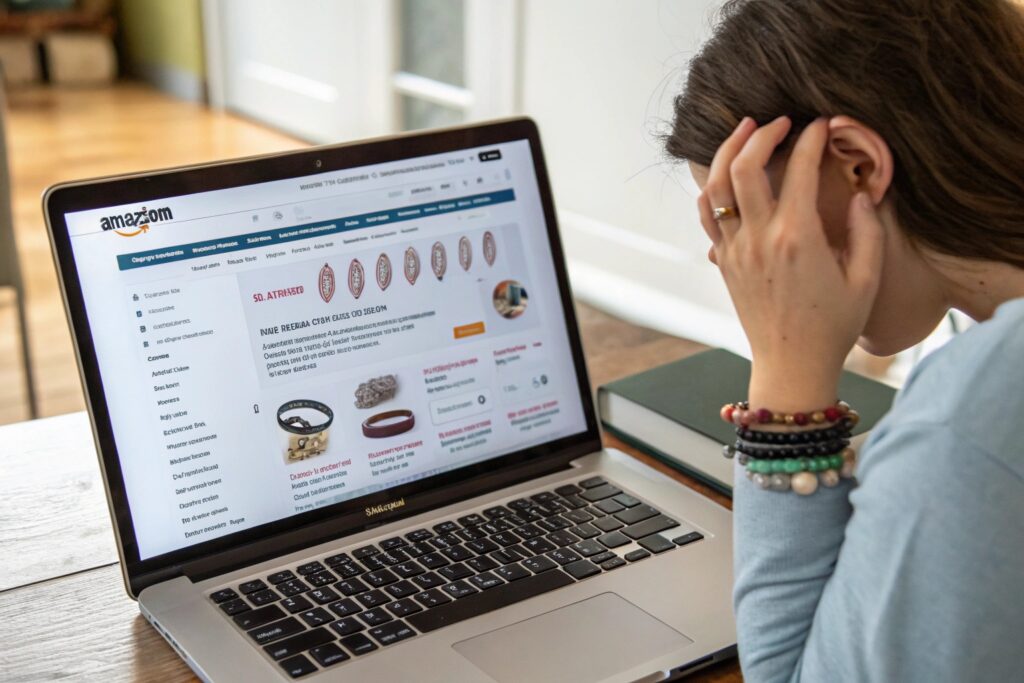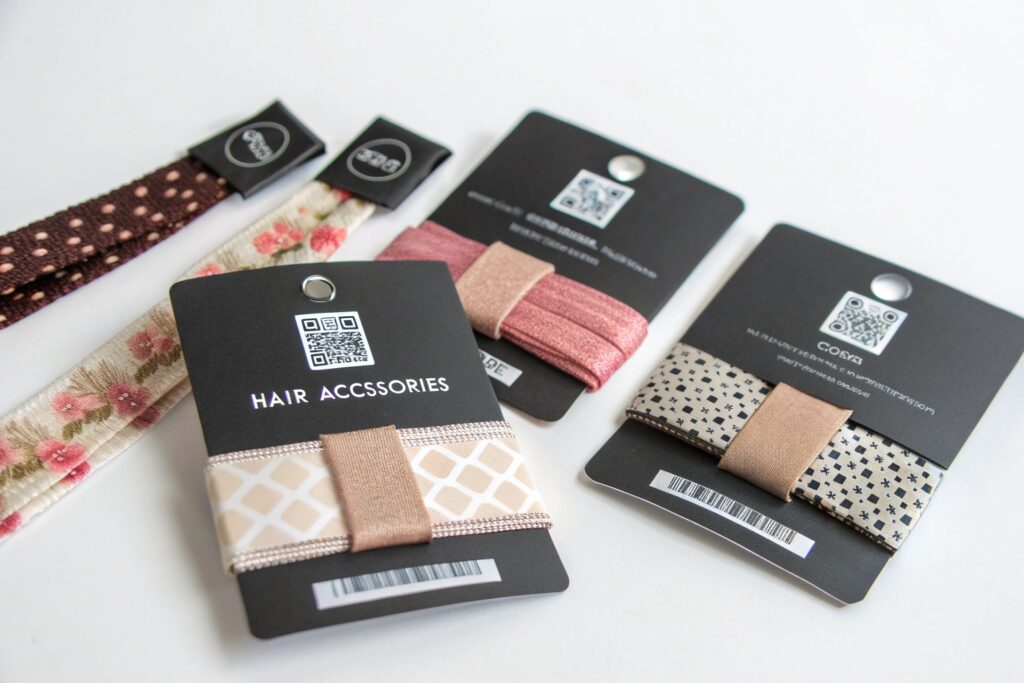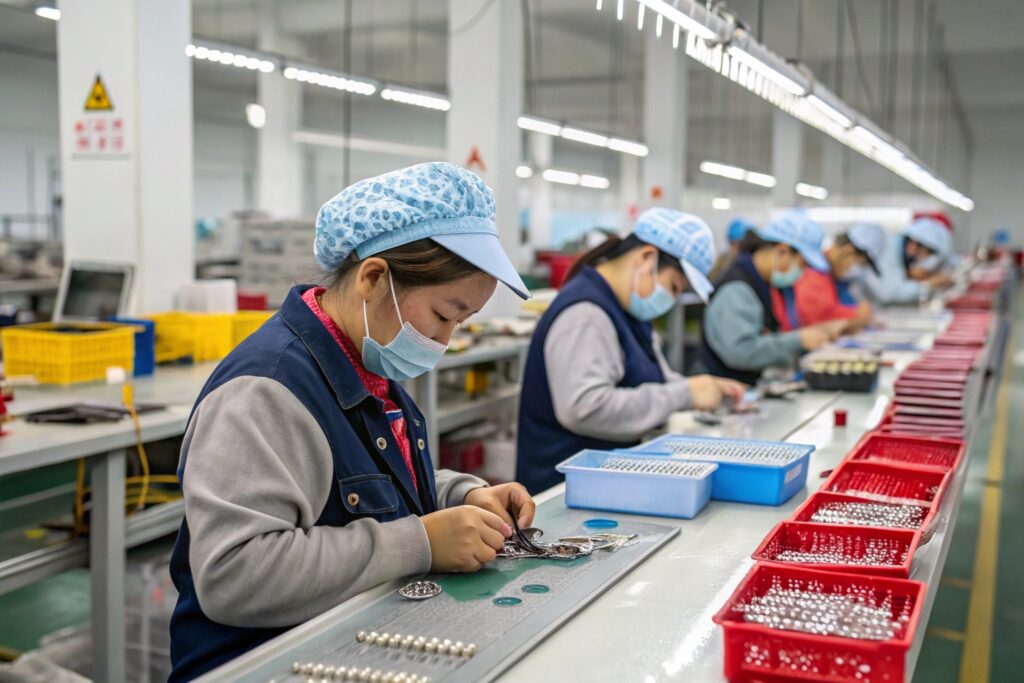E-commerce sellers of fashion accessories are under immense pricing pressure. Platforms like Amazon, Etsy, and SHEIN drive buyers to compare similar-looking items, often prioritizing price over brand story. For sellers trying to build a profitable business with quality hair accessories, competing solely on price feels like a race to the bottom. I’ve seen startups get crushed by inventory costs, while bigger sellers struggle to keep margins after promotions.
The right manufacturer can help e-commerce sellers stay competitive through flexible MOQs, efficient production, smart packaging, and supply chain transparency. Lower prices don’t have to mean lower quality—if your factory partner is proactive and experienced.
Let’s explore the ways a manufacturer like HairAcc can support e-commerce clients in building profitable, scalable, and price-competitive hair accessory product lines.
Why Do E-commerce Sellers Struggle with Hair Accessory Pricing?
Every online hair accessory seller faces the same challenge: low prices dominate search results, especially on platforms with aggressive filtering. Buyers have endless options, and new competitors pop up daily with strikingly similar SKUs.
E-commerce sellers struggle with pricing due to fierce competition, shipping costs, platform fees, and lack of factory-level pricing control.

What Role Do Online Marketplaces Play in This Pressure?
Platforms like Amazon Handmade or Etsy reward sellers with competitive pricing and fulfillment speed. However, sellers face listing fees, ad expenses, returns, and seller commission charges. When a claw clip costs $3.99 on the front page, sellers need a cost base under $1 to make real profit.
How Can Small Sellers Avoid a Race to the Bottom?
One tactic is to differentiate on quality and presentation—but even then, pricing matters. Successful sellers often request bundled packs, brand-specific packaging, or exclusive patterns from their manufacturer to stand out. This is why working with a flexible OEM supplier becomes critical.
How Can Manufacturers Reduce Unit Cost Without Sacrificing Quality?
We understand that sellers can’t always buy 10,000 units. That’s why our goal is to maximize production value—even for low MOQs—by using smart materials, semi-automated lines, and efficient design-to-packing processes.
Manufacturers can reduce unit prices by optimizing raw materials, offering standardized components, and minimizing labor through efficient production methods.

What Material Strategies Can Help Lower Cost?
Using cost-effective but high-performing materials like polyester blends or acetate alternatives helps us keep pricing low while maintaining durability. For example, our claw clips use recycled PC resin that molds easily and resists cracking.
We also offer standardized colors and molds to reduce tooling costs. This allows sellers to avoid custom dye fees for every batch. Many clients choose from our bestselling base molds and simply tweak patterns or logos.
Can Smart Packaging Really Cut Costs?
Yes. Bulk packing or flat-pack kits reduce carton volume and lower express fees. We’ve helped Amazon sellers cut costs by 15% simply by switching to hang-tag-only packs. Add a small zipper bag or branded card and it looks premium—but ships lean.
What MOQ Strategies Can Support New Sellers?
For new sellers, cash flow matters. Ordering 10,000 units of a style that doesn’t sell can be devastating. That’s why we offer low-MOQ options tailored to testing the market before scaling.
Low MOQs with flexible style and color choices allow e-commerce sellers to test trends without overstock risk, enabling smarter pricing decisions.

What’s the Typical MOQ for HairAcc Clients?
For hair clips, scrunchies, or pearl pins, we allow MOQs as low as 300–500 pieces per style/color. For startup kits, we provide mixed-style cartons based on trend insights. This lets sellers list 8–10 SKUs with just one box.
Services like Printful and Spocket can complement this with small-scale fulfillment for test runs, but the real cost savings come from owning the product with a low-MOQ factory order.
How Do We Help Sellers Scale with Data?
Our clients often share their platform data with us—bestsellers, CTR, abandoned cart rates. This helps us plan future production for them with efficiency. We can even adjust the material choice or styling details once we see which SKU sells fastest. This agile approach to production makes future pricing more competitive.
How Can Manufacturers Support Price-Competitive Branding?
Even if your price is right, branding matters. Online buyers want trust, perceived value, and beautiful presentation. Many of our successful clients focus on visual brand identity and rely on our support for customization.
Private-label packaging, branding add-ons, and marketing-friendly packaging help sellers maintain competitive pricing without looking “cheap.”

What Branding Support Do We Offer?
We offer free label design templates, affordable logo print services, and co-packing options. Some sellers use QR codes to link product cards directly to their Instagram or store. This boosts repeat business and brand awareness.
We also help with Amazon FNSKU labeling or barcode printing directly onto packaging. That means less third-party repacking costs for FBA orders.
How Do We Balance Branding with Shipping Cost?
Our designers specialize in flat-fold packaging that looks professional but keeps shipping lean. Card-based scrunchie sets or box-top pearl pin displays let clients compete visually while keeping per-unit shipping under $0.10.
Conclusion
E-commerce is a tough game—but with the right manufacturer, pricing doesn’t have to be your enemy. Whether it’s reducing raw material cost, offering low MOQs, designing brand-centric packaging, or syncing with your sales data, we help you compete where it matters most. We know the pressure sellers face. That’s why we don’t just manufacture—we co-strategize. At HairAcc, your profit is part of our plan.









